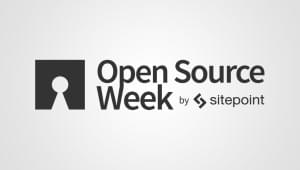I recently spent some time speaking with a popular Yankee Group analyst who covers the enterprise sector in the US, focusing in on open source and where the movement may go in the next few years.
Just to be clear, I differentiate, as most industry watchers do, between Linux and open source. While Linux is open source, the primary Linux distributors have caught on to how they need to position themselves for success and are starting to run their businesses just as any proprietary software company does.
Red Hat and SUSE make prime examples, realizing the path to long term success and revenue streams resided in proving themselves enterprise worthy to larger businesses and institutions, have shifted business models or been acquired by organizations with roots in the enterprise.
Her views, while not always popular in the open source community. are right on point if open source seeks widespread adoption and a permanent seat at the table for longer term financial success.
There are a few obstacles open source proponents need to accept and move forward on:
1) It will be more costly for a company to migrate away from Windows to Linux, even in light of slightly reduced ongoing maintenance and improved security and uptime.
While I have not always agreed that the costs are higher, having migrated corporate systems to Linux in the past, their research showed it to be true in many cases — especially when migrating beyond standard web hosting and email systems. The costs are higher when factoring in re-certifying drivers, application integrity and training.
2) To truly become entrenched as a viable financially-rewarding option (meaning open source companies make money and create jobs), a shift toward commercial software models is necessary. This does not mean forgoing open source, however, what it does mean is developing a structure for development, distribution, patching and support that passes muster with corporate IT managers who could be investing substantial amounts of money in open source.
What it boils down to is that while open source has definitely revolutionized software, and it is found internationally in companies large and small, businesses still pick software because it provides a solution not just because it is open source.
The fact that it is cheaper or free simply means the user will save money, but this does not win the favor of those buyers who could be injecting millions into open source projects rather than proprietary software makers.
I would use Firebird as a model. In an interview with Helen Borrie, forthcoming in my July column on SitePoint, she noted that since many Fortune 500 companies are using an open source database like Firebird speaks volumes to the maturing of their project and open source at large.
The reason as I see it, is due to the treatment of Firebird like an enterprise scale proprietary software project. They have a well managed developer community and active support lists, commercial offerings for support through partnerships with several companies, and commercial development projects for corporate clients.
If more open source projects looked at Borrie’s team model and discipline in development and support, we just might see more penetration that attracts longer and more profitable contracts and work for those like us in the SitePoint community.




